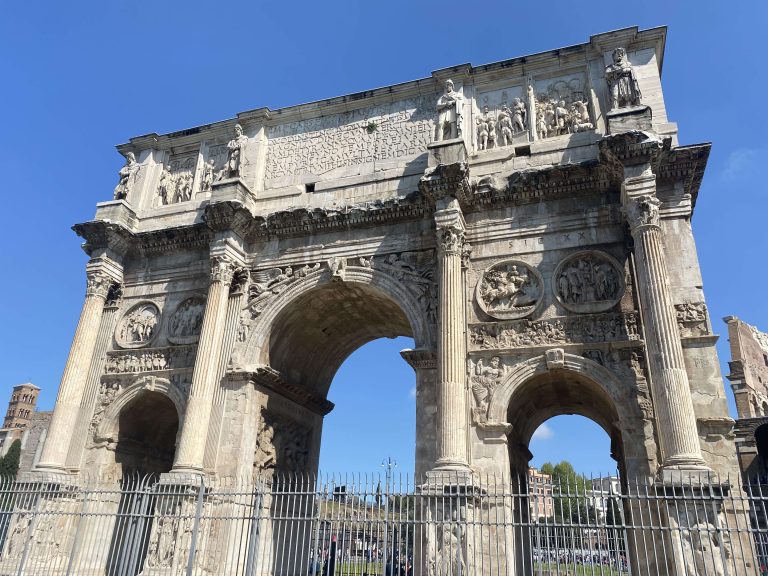Submitted by P.Kt. Andy Milligan. RCC437 and 450
On a recent holiday to Rome, I was really delighted to be able to stop by the impressive Arch of Constantine whilst on a walking tour with my wife. The triumphal arch will be well known to us all due to its prominent featuring on our Grand Imperial Conclave Certificates – or at least a representation of it.
The Arch is situated right in the centre of Rome: between the Colosseum and the Palatine Hill and was built to commemorate the victory of Emperor Constantine I over his rival, Maxentius, at the Battle of Milvian Bridge in 312 AD.

One of the most striking features of the arch is its sculptural decoration, which includes elements from earlier monuments, such as the Forum of Trajan and the Arch of Hadrian. This reuse of earlier artwork was a common practice in ancient Rome, and it served to link Constantine’s reign with the great emperors of the past. The arch also features scenes familiar to us, such as the miraculous vision of the cross that Constantine saw before the Battle of Milvian Bridge.

Despite its impressive size and decoration, the Arch of Constantine was not well-received by all Romans. Some critics argued that the arch was a symbol of Constantine’s tyranny and his disregard for traditional Roman values. Others pointed out that the arch relied too heavily on earlier artwork, and that it lacked originality.
Today, the Arch of Constantine is one of the most popular tourist attractions in Rome. Visitors can admire its impressive architecture and sculpture, as well as its historical significance. The arch serves as a reminder of Rome’s rich and complex past, and of the many different influences that have shaped the city over the centuries.
If you ever manage a trip to Rome, it is well worth taking a moment of your time to stop by and appreciate this architectural beauty.

